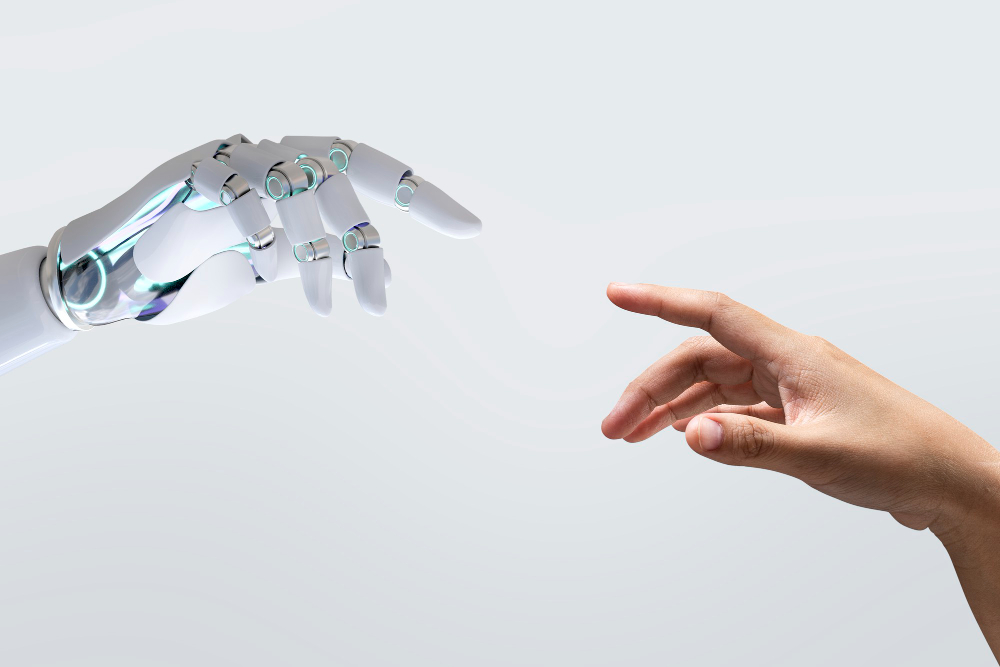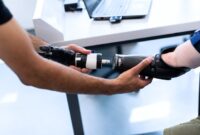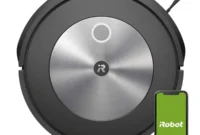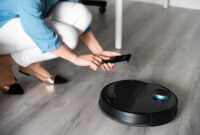The demand for convenience and efficiency continues to rise. Domestic robots have emerged as innovative solutions, offering assistance with various tasks and making our lives easier. These intelligent machines are designed to perform specific functions within a household, providing a range of benefits and possibilities. In this article, we will explore the definition of domestic robots, their types, popular examples, the role of artificial intelligence, challenges, future trends, and more.

Introduction
The rapid advancements in technology have paved the way for domestic robots to become an integral part of modern households. These robots are specifically programmed to perform tasks that were traditionally carried out by humans, thereby saving time and effort. With their increasing popularity, it is important to understand what defines a domestic robot and how they can improve our daily lives.
What are Domestic Robots?
Domestic robots, also known as home robots, are autonomous machines designed to assist with various household tasks. They are equipped with advanced sensors, processors, and software that enable them to perceive and interact with their environment effectively. These robots are programmed to perform specific functions, such as cleaning, cooking, companionship, and security, to simplify the lives of their users.
Examples of Domestic Robots
Domestic robots encompass a wide range of applications. Some common examples include:
- Roomba: The Cleaning Robot
- Roomba is a popular cleaning robot that autonomously vacuums and mops floors.
- It utilizes advanced mapping technology to navigate through rooms, avoiding obstacles.
- Users can schedule cleaning sessions and control the robot remotely through a smartphone app.
- Anova Precision Cooker: The Cooking Robot
- The Anova Precision Cooker is a cooking robot that assists in preparing delicious meals.
- It uses sous vide cooking techniques to ensure precise temperature control and consistent results.
- Users can monitor and control the cooking process through a smartphone app.
- Jibo: The Companion Robot
- Jibo is a social robot designed to provide companionship and assistance.
- It can engage in conversations, recognize faces, capture photos, and perform basic tasks.
- Jibo’s expressive movements and interactive features make it an appealing addition to households.
- Ring Video Doorbell: The Security Robot
- The Ring Video Doorbell is a security robot that enhances home security.
- It features a built-in camera and motion sensors, allowing homeowners to monitor their front door remotely.
- Users receive instant alerts on their smartphones when someone approaches the door.
Benefits of Domestic Robots
The integration of domestic robots into our daily lives brings forth numerous benefits and advantages. Let’s explore some of the key advantages that these robots offer:
Time-saving
Domestic robots can significantly reduce the time spent on repetitive and mundane tasks. For example, a cleaning robot like Roomba can autonomously clean the floors while you focus on other important activities. This time-saving aspect allows individuals to allocate their energy and attention to more meaningful endeavors.
Increased efficiency
With their advanced sensors and algorithms, domestic robots can perform tasks with high precision and efficiency. They can navigate through complex environments, avoiding obstacles and optimizing their routes. This level of efficiency ensures that tasks are completed effectively, resulting in a more productive household.
Assistance with household chores
One of the primary roles of domestic robots is to assist with various household chores. Whether it’s vacuuming, mopping, or cooking, these robots can handle a wide range of tasks. By delegating these chores to robots, individuals can enjoy a cleaner and more organized living space without exerting physical effort.
Enhanced security
Security robots, such as the Ring Video Doorbell, provide an additional layer of security for homes. These robots allow homeowners to monitor their property remotely, receive real-time notifications, and even communicate with visitors. The presence of security robots helps deter potential intruders and enhances overall safety.
Types of Domestic Robots
Domestic robots can be categorized into different types based on their primary function. Let’s explore some common types of domestic robots:
Cleaning robots
Cleaning robots, like the Roomba, are designed to automate the process of cleaning floors, carpets, and other surfaces. They utilize brushes, suction, and advanced navigation systems to efficiently remove dirt and debris. Cleaning robots can significantly reduce the time and effort required for maintaining a clean home.
Cooking robots
Cooking robots, such as the Anova Precision Cooker, assist with meal preparation. These robots employ innovative cooking techniques, such as sous vide, to ensure precise and consistent results. Users can control the cooking process remotely, allowing them to multitask or relax while the robot handles the culinary duties.
Companion robots
Companion robots, like Jibo, are designed to provide social interaction and companionship. They can engage in conversations, recognize faces, and perform basic tasks. Companion robots are particularly beneficial for individuals who may feel lonely or require assistance with daily activities.
Security robots
Security robots, such as the Ring Video Doorbell, focus on enhancing home security. These robots are equipped with cameras, motion sensors, and smart features. They allow homeowners to monitor their property, receive alerts, and communicate with visitors remotely. Security robots offer peace of mind and a heightened sense of security.
Domestic Robots and Artificial Intelligence
Artificial intelligence (AI) plays a crucial role in the functionality and capabilities of domestic robots. These robots are powered by advanced AI algorithms that enable them to adapt, learn, and improve their performance over time. Here are some key aspects of the integration of AI in domestic robots:
AI-powered features
Domestic robots leverage AI to enhance their functionality and provide intelligent features. For example, cleaning robots can use AI algorithms to map and navigate efficiently, avoiding obstacles and adapting to changes in the environment. Cooking robots can utilize AI to analyze recipes, adjust cooking parameters, and suggest personalized recommendations based on user preferences.
Machine learning capabilities
Machine learning is an essential component of domestic robots’ AI capabilities. These robots can learn from user interactions and improve their performance based on collected data. For instance, a companion robot can learn a user’s preferences, adapt its conversational style, and provide personalized assistance. Machine learning enables domestic robots to continuously evolve and cater to individual needs.
Challenges and Limitations of Domestic Robots
While domestic robots offer significant advantages, they also come with certain challenges and limitations. It is important to consider these factors before incorporating them into our daily lives. Here are some notable challenges associated with domestic robots:
Cost
Many domestic robots are relatively expensive, making them inaccessible to a wide range of consumers. The advanced technology and capabilities incorporated into these robots contribute to their higher price points. Affordability remains a challenge for mass adoption of domestic robots, and manufacturers are working to address this barrier through cost optimization and market competition.
Privacy concerns
Domestic robots often collect and process personal data, raising concerns about privacy and data security. As these robots become more integrated into our lives, it is crucial to ensure that user data is handled securely and transparently. Manufacturers must prioritize privacy measures and provide clear guidelines on data usage to maintain user trust.
Technical limitations
While domestic robots have made significant advancements, they still have technical limitations. For example, a cleaning robot may struggle with complex tasks that require human judgment or delicate maneuvering. The effectiveness of certain functions, such as cooking or companionship, may vary based on the sophistication of the robot’s AI algorithms. Continued research and development are necessary to overcome these limitations and improve overall performance.
Future Trends in Domestic Robotics
The field of domestic robotics is constantly evolving, and several exciting trends are shaping the future of these intelligent machines. Here are some key trends to watch out for:
Integration with smart home devices
Domestic robots are expected to become increasingly integrated with other smart home devices. This integration allows seamless communication and coordination between various technologies, enhancing overall automation and convenience. For example, a cleaning robot can coordinate with smart home systems to optimize its cleaning schedule based on occupancy or adjust its cleaning patterns based on environmental factors.
Personalization and customization
Future domestic robots are likely to offer more personalized experiences. Advanced AI algorithms will enable robots to learn individual preferences, adapt to specific user needs, and provide tailored assistance. Customization options, such as voice recognition and personalized settings, will make these robots more intuitive and user-friendly.
Advancements in AI and automation
As AI technology continues to advance, domestic robots will become more intelligent and capable. Machine learning algorithms will enable robots to understand and respond to natural language commands, recognize emotions, and adapt their behavior accordingly. Automation will also play a significant role, allowing robots to perform complex tasks with minimal user intervention.
Conclusion
Domestic robots are revolutionizing the way we manage our households, offering convenience, efficiency, and assistance. These intelligent machines, powered by AI, are designed to simplify our lives by performing various tasks and functions. While there are challenges to overcome and limitations to consider, the future of domestic robotics looks promising. As technology continues to advance, we can expect more sophisticated and personalized robots that seamlessly integrate into our daily lives, making our homes smarter and more comfortable.
FAQs
- Are domestic robots safe to use around children and pets?
- Domestic robots are designed with safety features to minimize potential risks. However, it is essential to follow the manufacturer’s guidelines and supervise their operation around children and pets.
- Can domestic robots replace human interaction and relationships?
- While domestic robots can provide companionship, they cannot replace human interaction and relationships. These robots are designed to assist and enhance our lives, but human connections remain irreplaceable.
- Do domestic robots require special maintenance or cleaning?
- Domestic robots typically require regular maintenance and cleaning. It is important to follow the manufacturer’s instructions and guidelines for proper care to ensure optimal performance.
- Can domestic robots adapt to different household environments?
- Yes, domestic robots are designed to adapt to various household environments. They use sensors and advanced algorithms to navigate and adjust their behavior based on the specific conditions of each home.
- What is the future outlook for domestic robots?
- The future of domestic robots looks promising, with advancements in AI, automation, and integration with smart home devices. We can expect more intelligent, personalized, and capable robots that further simplify our daily lives.


